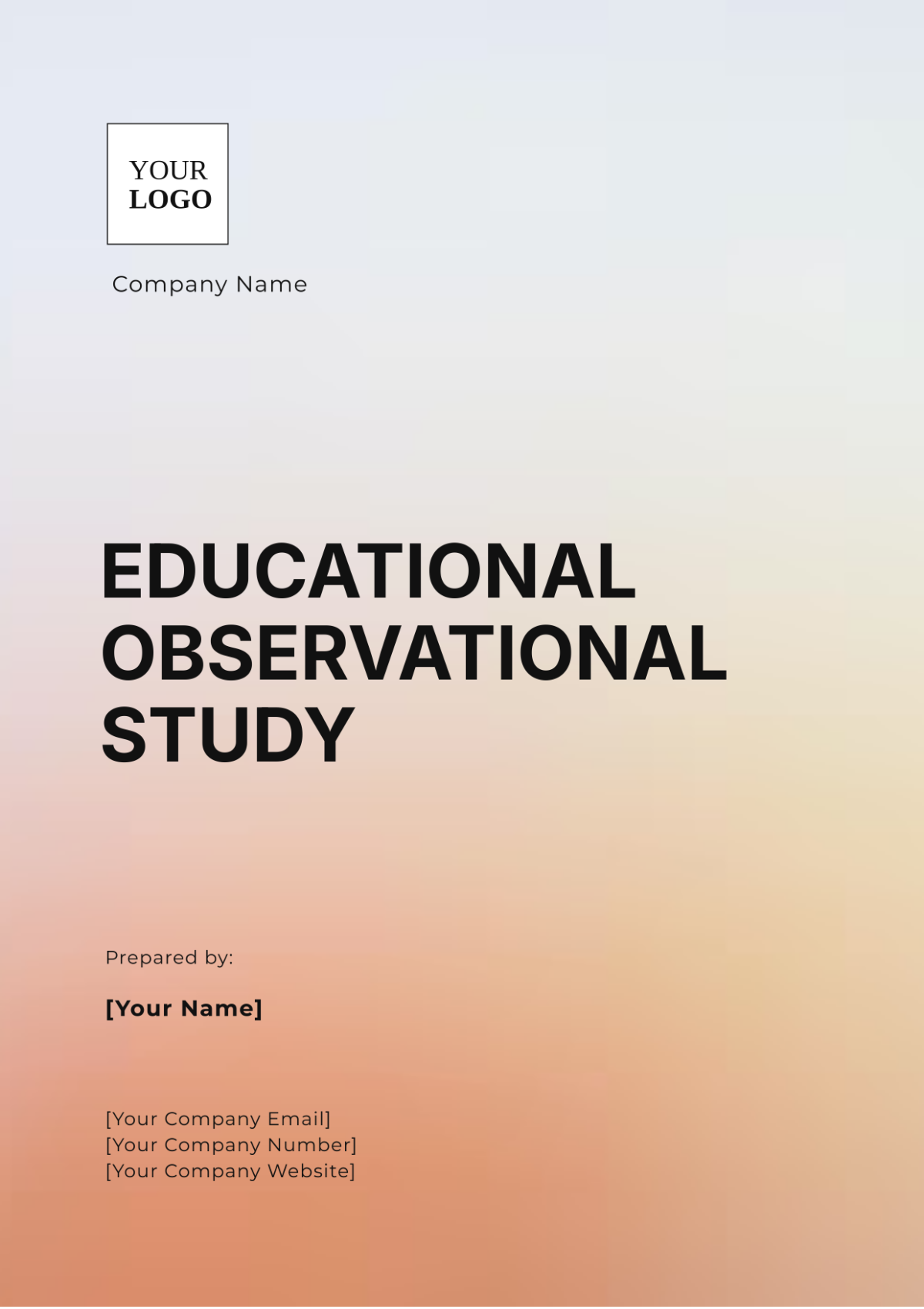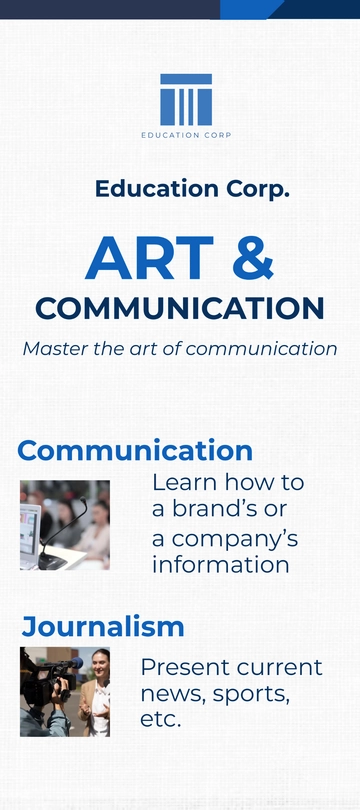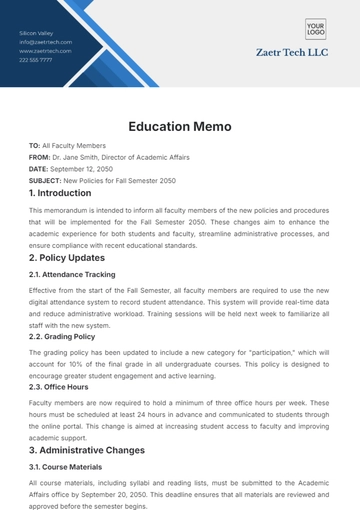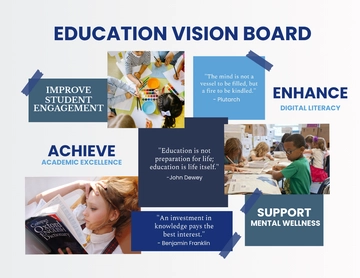Free Educational Observational Study

Prepared By: [Your Name]
Observational Study on Educational Outcomes in Diverse Classroom Settings
I. Introduction
Education systems worldwide have embraced various teaching methodologies and classroom environments to optimize student learning. This observational study aims to investigate how different classroom settings influence educational outcomes. By analyzing a range of environments, the study seeks to provide insights into which conditions most effectively support student achievement and engagement.
II. Methodology
A. Study Design
This study employs an observational approach to assess classroom environments and their impact on student outcomes. The research methodology includes:
Classroom Observations: Monitoring real-time interactions, teaching methods, and student engagement.
Student Assessments: Collecting data on academic performance and behavioral indicators.
Teacher Interviews: Gaining qualitative insights from educators regarding their experiences and perceptions.
B. Sample Selection
The focus of the study is on:
Classroom Settings: Various types, including traditional, progressive, and technology-integrated.
Participants: Students and teachers from elementary, middle, and high schools.
III. Findings
A. Classroom Settings and Student Engagement
Setting Type | Student Engagement Level | Key Characteristics |
|---|---|---|
Traditional | Moderate | Structured schedule, conventional teaching methods |
Progressive | High | Student-centered, project-based learning |
Technology-Integrated | High | Use of digital tools, interactive activities |
Traditional Settings
In traditional classrooms, student engagement is generally moderate. These environments often feature a teacher-centered approach with a focus on direct instruction. Observations indicated that while students complete assignments, there is limited interaction and collaborative learning.
Progressive Settings
Progressive classrooms exhibit high levels of engagement. Emphasizing student choice and hands-on projects, these settings foster a dynamic learning experience. Students are more likely to participate actively and show enthusiasm for learning.
Technology-Integrated Settings
Technology-integrated classrooms also demonstrate high engagement levels. The use of digital tools and interactive media makes learning more appealing and accessible. Students often exhibit increased motivation and creativity when engaging with technology.
B. Academic Performance and Learning Outcomes
Setting Type | Average Test Scores | Behavioral Indicators |
|---|---|---|
Traditional | 75% | Average attendance, occasional disruptions |
Progressive | 85% | High attendance, collaborative behavior |
Technology-Integrated | 80% | High attendance, frequent technological use |
Traditional Settings
Students in traditional classrooms generally score around 75% on standardized tests. Although academic performance is acceptable, behavioral indicators suggest a more passive learning experience.
Progressive Settings
Students in progressive settings achieve an average score of 85%. The high level of engagement and interactive learning approaches contribute to better performance and positive behavioral outcomes.
Technology-Integrated Settings
Students in technology-integrated environments score approximately 80%. The incorporation of technology supports diverse learning styles, though it does not always surpass the academic results of progressive settings.
C. Teacher Insights
Teachers provided valuable feedback on their experiences in various settings:
Traditional Settings: Educators reported challenges in maintaining student interest and adapting lessons to diverse needs.
Progressive Settings: Teachers appreciated the flexibility and observed higher student motivation and creativity.
Technology-Integrated Settings: While recognizing the benefits of technology, teachers expressed concerns about managing digital distractions.
IV. Discussion
The study’s findings indicate that both progressive and technology-integrated classroom settings foster higher student engagement and better academic outcomes compared to traditional environments. The flexibility and interactive nature of these settings contribute to a more dynamic and effective learning experience. However, effective integration of technology requires careful management to prevent potential distractions.
V. Recommendations
Based on the study’s findings, the following recommendations are proposed:
Adopt Progressive Teaching Methods: Incorporate more student-centered activities and project-based learning to enhance engagement.
Integrate Technology Wisely: Use digital tools to complement traditional methods without overwhelming students.
Professional Development: Provide training for teachers to effectively implement and balance various teaching strategies.
VI. Conclusion
This observational study highlights the impact of different classroom settings on educational outcomes. By adopting diverse and flexible approaches, educators can better support student learning and achievement. Future research should continue exploring the evolving dynamics of classroom environments and their implications for educational success.
- 100% Customizable, free editor
- Access 1 Million+ Templates, photo’s & graphics
- Download or share as a template
- Click and replace photos, graphics, text, backgrounds
- Resize, crop, AI write & more
- Access advanced editor
Improve your educational research with Template.net’s Educational Observational Study Template. This editable and customizable template offers a clear structure for documenting and analyzing educational observations. Editable in our AI Editor Tool, it’s perfect for researchers in education needing a systematic approach. Tailor the template to fit your study requirements for comprehensive, organized results.





























